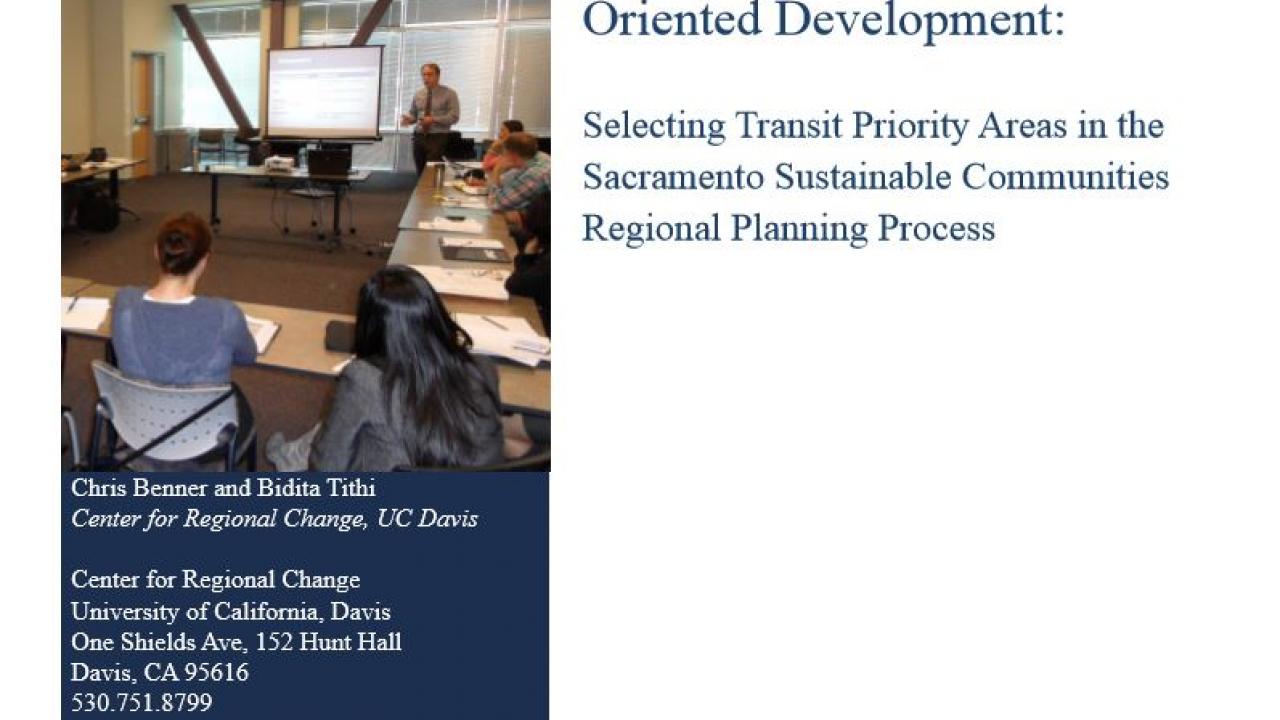
Social Equity and Transit Oriented Development
Social Equity and Transit Oriented Development
In fall of 2010, the Sacramento Area Council of Governments (SACOG) and its partners received a grant from the U.S. Department of Housing and Urban Development for regional planning to accelerate transit-oriented development (TOD) in the Sacramento region. The Center for Regional Change (was primarily responsible for developing mechanisms for analyzing the social equity considerations in prioritizing transit-oriented development projects, and for promoting these considerations as a central part of the TPA selection process.
As one of the partners on the project, the Center for Regional Change (CRC) at the University of California Davis was primarily responsible for developing mechanisms for analyzing the social equity considerations in prioritizing transit-oriented development projects, and for promoting these considerations as a central part of the TPA selection process. The focus of the work involved developing two neighborhood indices—a vulnerability index and an opportunity index—that could be used to compare the social equity characteristics of specific neighborhoods to the region as a whole. A central goal of both indices was to design them in ways that could on the one hand incorporate the complex and multi-faceted nature of social vulnerability and opportunity in the region, but on the other hand provide decision makers with an intuitive and quick way of identifying neighborhoods with high levels of social vulnerabilities, and neighborhoods that showed characteristics of high social and economic opportunity. It was also important that the indices be developed in a broad participatory process, both to incorporate the wealth of knowledge of social equity advocates in the region, and to ensure that the final product had broad public support.
The resulting vulnerability index and opportunity index, and the specific indicators that comprised these indices, became important tools in the TPA selection process, and are now forming the basis for on-going efforts to incorporate social equity into neighborhood strategic planning, in updates to the Metropolitan Transportation Plan and in developing a framework for tracking performance in attaining social equity goals in the long term. This is an ongoing process, shaped by a variety of lessons learned to date and recognition of the limitations of indicator initiatives alone in shaping equity outcomes. This report provides background on the initiative, details of the processes involved, discussion of the specific construction of the vulnerability and opportunity indices and what they revealed about neighborhoods near prospective TPAs, and reflections on the lessons learned and limitations encountered.
Links:
